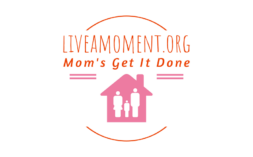Rideshare apps like Lyft have become second nature in busy cities like Chicago. But while most people worry about what happens during the ride, many serious injuries happen just before or after the trip, when passengers are entering or exiting the vehicle. If you’ve been struck while stepping into or out of a Lyft, don’t assume it’s just bad luck. These cases often involve negligence, and you may be entitled to compensation. Whether it’s another car that fails to yield, a cyclist passing too close, or the Lyft driver choosing a dangerous drop-off spot, injuries at the curb can be just as severe—and just as valid for legal action—as those that happen in moving traffic.
Curbside Doesn’t Mean Causeless: Lyft Still Owes You a Duty of Care
You might think once the ride ends, the driver’s responsibility ends too, but that’s not true. Lyft drivers are required to pick up and drop off passengers in a reasonably safe location. If a driver stops in an active traffic lane, too close to an intersection, or in a bike lane, they may be held liable for injuries that occur as you enter or exit the car. A qualified Lyft accident lawyer can help determine whether driver negligence played a role in your injury, even if you never left the curb. This duty of care includes anticipating traffic flow, avoiding no-stopping zones, and choosing safer alternatives when available. If a driver fails in this responsibility, both Lyft and the driver may share legal responsibility.
The “Open Door” Danger: When Other Drivers Fail to Yield
One of the most common curbside accident scenarios involves “dooring”—when another vehicle, cyclist, or scooter hits an opening Lyft door or the passenger entering or exiting. While Illinois law requires motorists to exercise caution around stopped vehicles and pedestrians, enforcement is inconsistent, and these incidents can lead to significant injuries.
 If another driver strikes you while you’re stepping out, that driver may be fully or partially at fault. The challenge lies in documenting the scene quickly, since these incidents often escalate into “he said, she said” disputes about timing, signals, and location. Photos, video footage, and witness accounts can be invaluable in determining fault.
If another driver strikes you while you’re stepping out, that driver may be fully or partially at fault. The challenge lies in documenting the scene quickly, since these incidents often escalate into “he said, she said” disputes about timing, signals, and location. Photos, video footage, and witness accounts can be invaluable in determining fault.
When Is Lyft’s Insurance Coverage Active?
Lyft’s commercial insurance policy may cover injuries, but only during specific timeframes. If your app status was still “on the clock” (i.e., your ride was active or just ended seconds before the incident), Lyft’s $1 million liability policy could apply. However, if the driver had already marked the ride as complete, things get murkier. In that case, your claim might fall under the driver’s personal insurance, or your own uninsured/underinsured motorist coverage if the at-fault driver fled or had no insurance. Navigating these layers of coverage often requires legal assistance to determine which policy applies, how much it covers, and who is responsible for filing claims.
What If You Were Hit as a Pedestrian Near a Lyft Vehicle?
Even if you weren’t a Lyft passenger, you may have a case. Pedestrians struck by Lyft vehicles while crossing behind, walking around, or navigating around poorly parked rideshare cars are often eligible for compensation. If the Lyft driver created an unsafe situation—by double-parking, blocking crosswalks, or stopping mid-lane—they could be held liable for the resulting injuries. In dense neighborhoods or entertainment districts, Lyft drop-offs often clog narrow streets and cause visibility issues. If the driver’s choice of stop made it harder for others to see or react, you may have grounds for a negligence claim.
Cyclist and Scooter Risks: Not Just a Car-to-Car Problem
Chicago’s streets are increasingly shared by bikes and scooters, and curbside interactions with rideshare vehicles pose serious risks to these riders. A Lyft passenger opening a door without checking for a cyclist, or a driver who pulls into a bike lane to let someone out, can trigger devastating crashes.

If you’re a cyclist injured by a Lyft-related curbside incident, you don’t need to have collided with the vehicle itself to have a case. Liability may still rest with the driver, passenger, or even Lyft as a company if unsafe operating policies contributed to the crash.
Liability Isn’t Always Obvious—But It Can Be Proven
In these types of accidents, liability can be complex. Was the Lyft driver distracted? Did a third-party car speed past illegally? Did the passenger open their door into traffic without checking? The answers are rarely clear at the scene, but can be uncovered through investigation, camera footage, and rideshare data. Legal teams experienced in Lyft-related claims know how to access app logs, driver records, dashcam footage, and nearby surveillance to paint a full picture of what happened—and to hold all negligent parties accountable.
Common Injuries From Entry/Exit Incidents
These crashes may not involve high speeds, but that doesn’t mean the injuries are minor. Victims often suffer:
-
- Traumatic brain injuries from falls or impacts
-
- Broken bones from being pinned or knocked down
-
- Spinal cord injuries from sudden twisting or impact
-
- Lacerations and road rash from being thrown onto the pavement
-
- Psychological trauma from sudden, violent incidents
These injuries deserve full legal attention and compensation, regardless of whether you were in motion at the time of the crash.
Steps to Take Immediately After a Lyft Curbside Accident
If you’re hit while entering or exiting a Lyft, here’s what to do:
- Call 911 and report the incident
- Take photos of the vehicle, surroundings, and any damage
- Get contact information from the Lyft driver and any witnesses
- Report the incident through the Lyft app and request a crash report
- Seek immediate medical attention—even if symptoms are mild
- Contact a rideshare accident attorney to begin investigating coverage
Why Legal Guidance Matters After a Lyft Curbside Accident
Accidents that occur while getting in or out of a Lyft may seem like minor mishaps, but they often lead to complex questions about liability, coverage, and responsibility. Victims are frequently caught between personal insurance, rideshare policies, and uncooperative drivers or third parties. In these moments, it’s easy to feel overwhelmed or unsure about whether you have a case. That’s why consulting with an experienced attorney is essential. No matter how minor the crash may seem at first, understanding your rights and getting experienced legal support can make all the difference in holding the right party accountable and securing the compensation you deserve.


